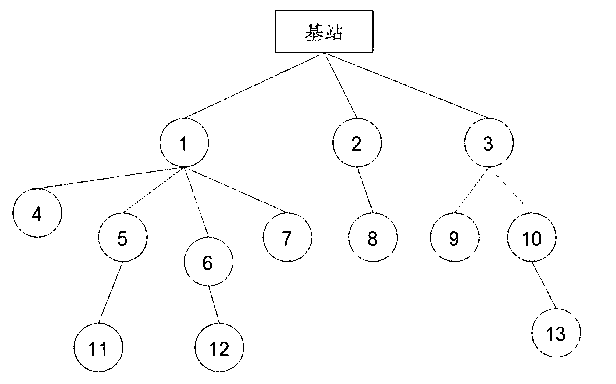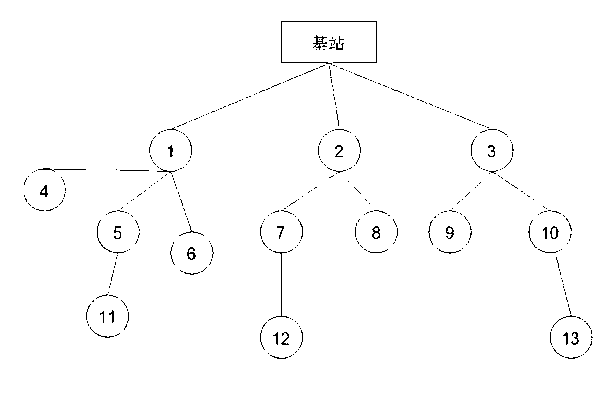Load balance CTP (Collection Tree Protocol) routing protocol
A routing protocol and load balancing technology, applied in the field of CTP routing protocol, can solve the problems of small probability, long stable time of wireless sensor network routing, and large amount of stored data.
- Summary
- Abstract
- Description
- Claims
- Application Information
AI Technical Summary
Problems solved by technology
Method used
Image
Examples
specific example
[0032] First of all, when the route is established, the amount of data transmitted by each node in the previous cycle is 0, so each node only needs to consider the same issues as the CTP routing protocol when selecting a parent node, that is, the expected transmission value of the link, and the initial network topology established Such as figure 1 shown.
[0033] exist figure 1 In the shown network topology, because the link quality from node 1 to the root node is better, compared with other nodes at the same level, the number of descendant nodes of node 1 is more, so in the same cycle, the forwarded by node 1 The amount of data is also the largest, so under this topology, the load of the wireless sensor network is unbalanced, and the energy consumption of node 1 is quickly exhausted, resulting in a shortened life of the wireless sensor network. Therefore, as node 1 periodically forwards As the amount of data increases, compared to other nodes at the same level, the routing ...
PUM
 Login to View More
Login to View More Abstract
Description
Claims
Application Information
 Login to View More
Login to View More - R&D
- Intellectual Property
- Life Sciences
- Materials
- Tech Scout
- Unparalleled Data Quality
- Higher Quality Content
- 60% Fewer Hallucinations
Browse by: Latest US Patents, China's latest patents, Technical Efficacy Thesaurus, Application Domain, Technology Topic, Popular Technical Reports.
© 2025 PatSnap. All rights reserved.Legal|Privacy policy|Modern Slavery Act Transparency Statement|Sitemap|About US| Contact US: help@patsnap.com


